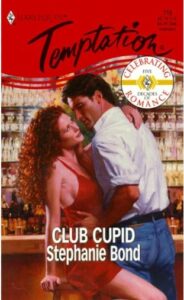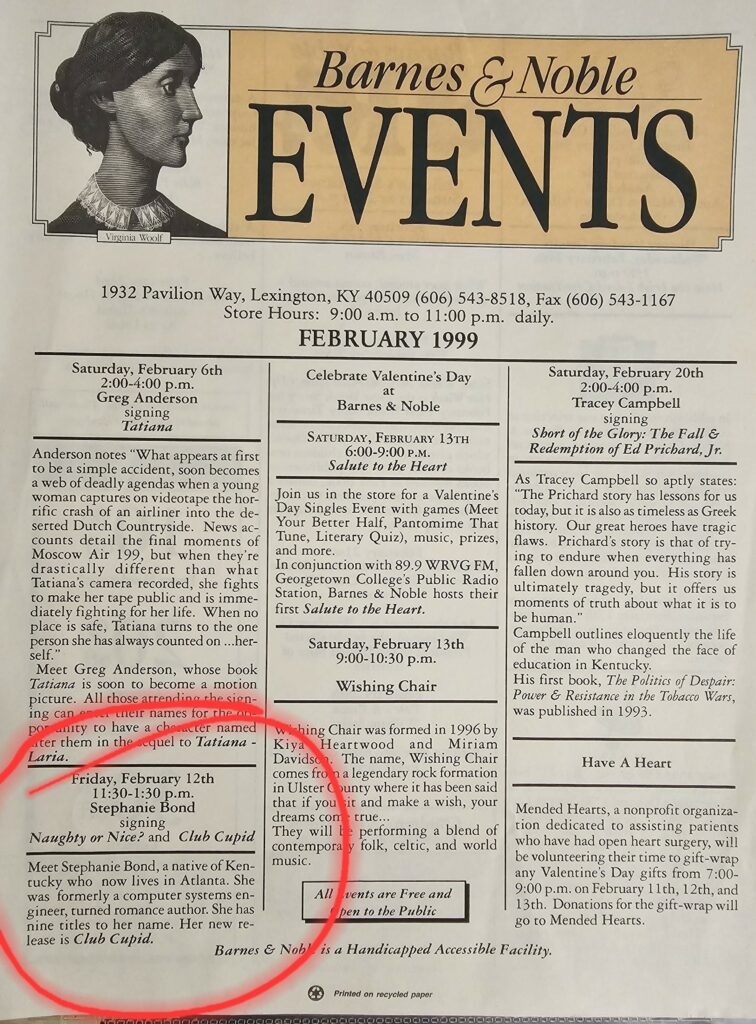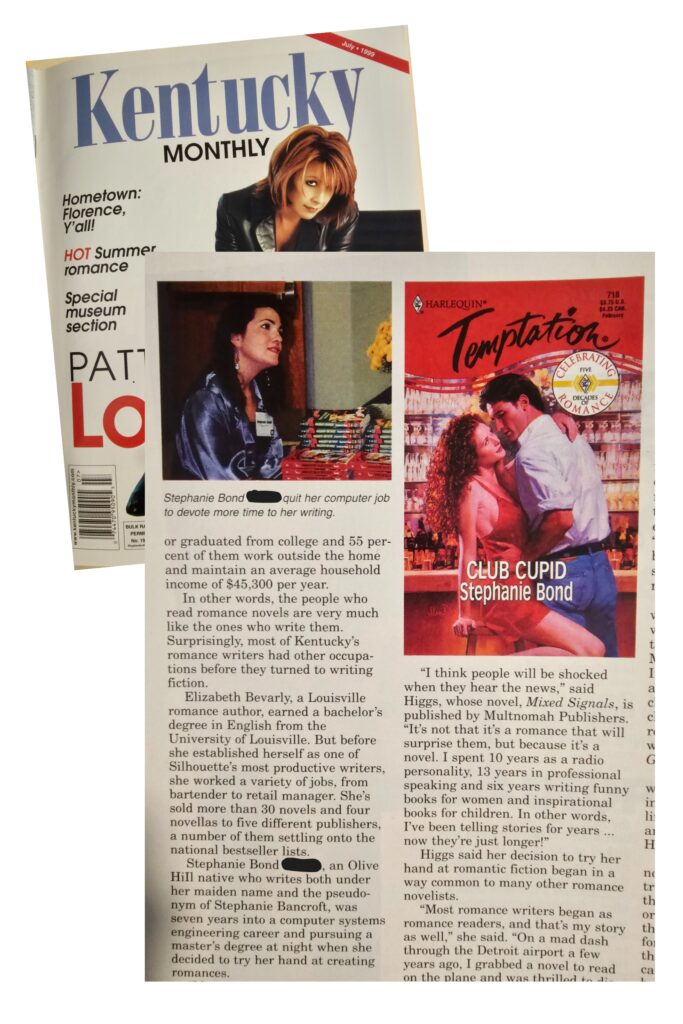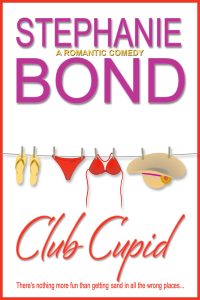←Return to Chapter 8: Pivoting to New Romance Lines
Thanks for coming back to my STORIES BEHIND THE STORIES project. I'll keep posting chapters as my schedule allows. The reality of a creative vocation is that sometimes, deadlines converge and there simply aren’t enough hours in the day to meet all my commitments. I really appreciate your patience as I continue down memory lane...
And while I’m on the subject of a creative vocation, I’d like to answer some questions I received after my remarks in Chapter 7: I Got This (I Think) regarding advice to anyone who’s considering making the leap from a job they don’t enjoy to something more creative. The most common question I received is How to encourage children and grandchildren who have stars in their eyes to follow their dreams but to also have a backup plan? And how does a person know if their child/grandchild has what it takes to become a professional writer/actor/musician/artist/dancer, etc.?
That’s a good question because we’re all guilty of over-praising the people we love. Their creative endeavors are so special to us, it’s a short jump to assuming the public will feel the same. So how do you find the balance of being supportive and realistic? My advice is to encourage the person to learn as much as they can about their chosen profession before they commit. If they want to be an artist, was that decision made after one watercolor painting night class? Did they decide to become a writer after reading one book that resonated with them? Did they decide to become an actor because their high school drama teacher praised them in a stage performance?
There’s a general sense that people who are successful in creative fields were born with innate talent and didn’t have to study or intern or labor in obscurity in order to have that success. And sure, there are anecdotes about people who achieved huge success on their first attempt, but if you drill down into those stories, there’s usually a certain amount of luck involved, or the person had contacts who lubricated the process for them.
So I suggest you urge your loved one to take many classes and get a job or volunteer in some part of their chosen industry to learn the ropes. If they’re reluctant to put in true effort and sacrifice, that’s a red flag they don’t want it enough to weather the ups and downs. And that’s okay—maybe they’ll revisit their creative interest at another time in their life.
Another question I received was what happens if your partner doesn’t support your dreams to move into a creative career? Oof, that’s a hard one. First, be honest with yourself—if you’ve dabbled in different creative pursuits in the past and lost interest, it’s understandable that a partner would be skeptical this time around. I would say first, have an honest conversation with your partner about how much this means to you, and be prepared with a plan about how you’re going to make it happen, step by step. Having a partner who doesn’t support your efforts or is resentful of the time you spend on it or is jealous of the attention and money you receive from it will lead to constant conflict. Be prepared for the dynamics in your relationship to change as time, attention, and money flow in and out of your creative vocation. That said, you and your partner are both entitled to change and grow, and to expect the other person to be supportive, as long as it doesn’t create an undue burden for others or threaten the family finances. Relationships are supposed to go in two directions!
And the third most common question I received from readers who are itching to ditch their “day” job for something more creative was simply, how do I get started? It’s true that for most careers, there’s a set path to follow: college, perhaps post-graduate work, then working with a college recruiter or interviewing to land an entry-level job, then progressing through the organization or moving to other companies within your industry to climb the ladder. But in creative fields, there’s no single entry point, no obvious path of progression, and fewer clues to know when you’ve achieved “success.” It can be intimidating, for sure, and, as one of my writing friends put it, “is not for sissies.”
Referring back to my previous post, the most safe and sure way to get started is by taking baby steps. Sign up for a class. Subscribe to a podcast. Buy a how-to book. Join a professional organization or a local Meetup group. (For writers, Romance Writers of America, Sisters in Crime, Society of Children's Book Writers and Illustrators, and International Thriller Writers accept aspiring writers, while other organizations like Novelists, Inc. and Science Fiction and Fantasy Writers have minimum publication requirements.) Identify someone who has the career you’d like to emulate, then sign up for their mailing list and pay attention to their backstory, their process, their product, their marketing, and their general sense of wellbeing and happiness. We’ve all heard stories about people who are at the top of their field and, according to social media, are “killing it.” Then we learn later they completely burned out and imploded spectacularly. Creative endeavors, as my friends and I are constantly reminding each other, are supposed to enrich our lives, not bleed us dry. Just make sure the person(s) you choose to emulate has enough history to prove their staying power. You should be in it for the long haul.
Also, I encourage you to write down your goals and give yourself deadlines for achieving them. A journal can be invaluable to document the highs and lows… or you might document your path on a blog, or on social media or through videos. Going public with your dreams is a big step, but it can be a huge source of inspiration. And of course, I’ll keep reiterating that nothing will move you forward faster than finding others who are pursuing the same goal and linking arms to learn together. This week alone I was in touch with four writers I’ve known for over 25 years, and we all agreed it’s impossible for other people to understand what we experienced in our careers. We’ll be bonded for life.
Okay, back to my writing career…
It was 1999 and I was preparing for the release of my next Harlequin Temptation romance novel. I’d pitched a story about a female workaholic who grudgingly agrees to go on a wedding cruise as a bridesmaid, then gets stranded at a cruise stop when she misses the boat. My original title was Stranded in Paradise, but editorial came back with a more “sexy” title: Club Cupid, a twist on Club Med, which used to be a wildly popular brand for all-inclusive exotic vacations (and still exists). Also, the book was given a February release slot, so the word “cupid” let readers know it was a Valentine’s Day story.
In Club Cupid, workaholic Frankie Jenson is stranded from her cousin’s wedding cruise in Key West after her laptop is stolen. Until she can be reunited with the cruise, she’s forced to rely on a Good Samaritan in the form of a sexy bartender. She falls hard for the man who’s the opposite of her in every way, but this can’t end well… can it?
Because this book was sold in the Temptation line, I had to find ways to make it super sexy—lots of sun, skin, and provocative situations!

Original cover of Club Cupid… LOVED!
I thought you might get a kick out of seeing some of my booksigning events from that era:

This Barnes & Noble store in Lexington, KY at the Hamburg Pavilion is still there, and is still a terrific store.

Another signing at Stamper Bros supermarket in my hometown of Olive Hill, KY. 😊 This piece appeared in the Olive Hill Times, February 1999, written by Sharon Hall.
And I was lucky enough to score some coverage in Kentucky Monthly magazine:

The article titled Hot Summer Romance was written by C.M. Eicher and featured romance authors with a connection to Kentucky including Teresa Medeiros, Elizabeth Bevarly, me, Liz Curtis Higgs, Annie Jones and Patricia Rice. (Btw, that’s Kentucky country singer Patty Loveless on the cover—HUGE fan! It’s impossible to listen to her hit “How Do I Help You Say Goodbye?” and not cry.)
ANYWAY, a couple of years ago, Harlequin reverted the rights to Club Cupid, giving me the chance to update the manuscript, and gosh, it was a lot of work, mostly because of technology. In the original manuscript, the heroine is talking on a pay phone when her computer bag is stolen, along with the only copy of an important work plan. And there were enough limits back then that it seemed realistic she couldn’t reach out to the cruise line, her relatives, and even her coworkers. But bringing the story into modern times meant working around a LOT of technological advances and creating new ways to prevent Frankie from making contact with people she would normally rely on. After I updated the manuscript, I put a new cover on it!

In case you missed it or would like to read the updated version, here's a link to Club Cupid.
At the same time I was promoting Club Cupid, my agent and I were discussing what to do to make up for the slack in my schedule created by the closing of the Bantam Loveswept line. I shared with her my desire to write a “single title” book, meaning a book that wouldn’t fit or be released in a set “line” at a publisher, like the category romance lines at Harlequin. All of the romance publishers bought and published single title books, but the competition was keen. My agent asked me to submit a list of ideas that would be “big” enough to sustain a longer book. I submitted the list of titles and the corresponding stories in the form of a few sentences. My agent kept coming back to one idea I called Our Husband about a woman who learns her husband is a bigamist with two other wives. When the magnanimous hubby dies suddenly and suspiciously, the wives have to team up to prove their innocence. In my mind, it would be a mystery, with the main character (the middle wife) possibly getting a new romance. Because making the jump from category romance to single title was a big career move, my agent asked me to write a long synopsis so she could pass it around the agency to get feedback. I did, then sent it to her and kept working on other projects.
The feedback was slow and um, conflicting. Someone suggested the women needed a reason to work together other than their husband’s murder. Someone else suggested that the husband not be murdered, but go to jail for some reason and leave a business for the women to be forced to run together until he got out. And then there was the matter of what kind of business—an advertising firm? A hotel? A department store?
After many months of back and forth and countless iterations of the synopsis, someone suggested the company be a women’s underwear business. I rewrote the synopsis yet again, and I gotta tell you, I was starting to lose my enthusiasm for the story. Every version became longer and more convoluted. I appreciated the people who gave me feedback, but my original concept was gone and getting muddy.
Side note: You know a story is too muddy when it’s difficult to write the back cover blurb. When you have to supply detail in order to describe the idea, it’s not high concept enough.
My agent decided to submit the synopsis to an editor we trusted and hoped to work with—Stephanie Kip, my former editor at Bantam. Stephanie kindly read it and while she liked the overall concept, asked why the story was so complicated? My agent ruefully suggested that we go back to my original idea and submitted that version to Stephanie. Yes, she said, now she could see the story, and it might be something she’d be interested in buying. Let me add here that it's easy to think I wasted time exploring those other angles, but now I was more confident in my original idea and if anyone brought up other tangential ideas, I was prepared to defend my concept, so it was a worthwhile, if time-consuming, exercise.
So now we had the kernel of something that could be a longer, more layered story. My agent suggested that I expand on my original idea with character sketches of the husband and the three wives. I wanted to maintain a humorous tone, so I gave the husband a quirky job—he sold prosthetic limbs. And I made the three wives wildly different—a socialite, a physician, and a stripper. I wrote a prologue showing the husband suffering an event that landed him in the hospital, and the first couple of chapters showing the middle wife going to the hospital and learning about her husband’s betrayal because his other two wives also show up.
We kept the title of Our Husband, and submitted the proposal “wide,” meaning to several editors at different publishers at once. And we waited.
Have I mentioned how much time a writer spends waiting? Waiting for yes, waiting for no, waiting for "maybe, if you change this and that." Usually a yes is fast and a no is slow, but not always. The more money that’s at stake, the more people who have to weigh in on a decision. Plus when single title books are considered, they have to fit into an overall publishing brand, meaning the book has to be unique and able to stand on its own, yet still be something that would appeal to a publisher’s existing audience. And then there’s the author—are they someone the publisher is willing to invest in long-term and possibly take resources from an author they previously invested in?
I was hopeful for at least one “YES” but prepared for unanimous “NOs.” I was a nervous wreck—I didn’t want to disappoint my agent or be embarrassed in front of my family and friends who had cheered me on throughout the entire process. I was afraid to leave the house because I might miss a call (this was back when we only had landlines).
And finally, after weeks and weeks and weeks of waiting, my agent called with news. ~